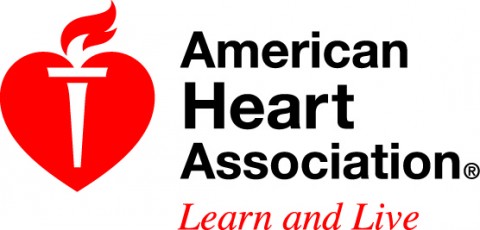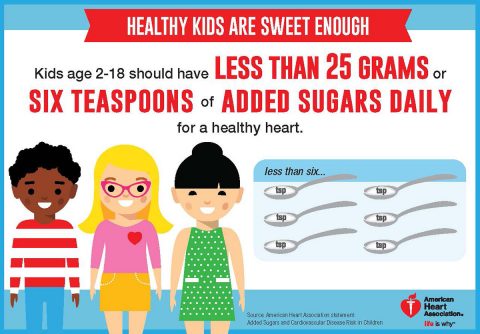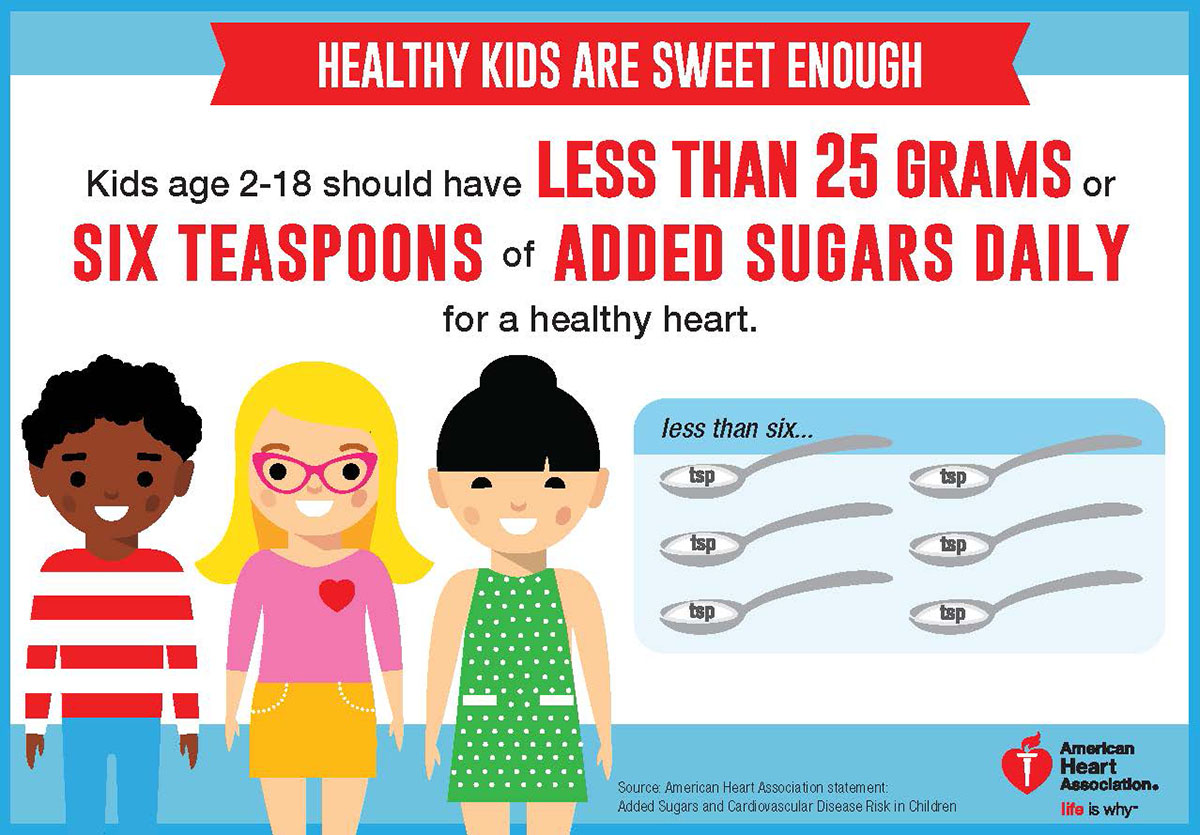American Heart Association Scientific Statement
 Dallas, TX – Children ages 2 to 18 should eat or drink less than six teaspoons of added sugars daily, according to the scientific statement recommending a specific limit on added sugars for children, published in the American Heart Association journal Circulation.
Dallas, TX – Children ages 2 to 18 should eat or drink less than six teaspoons of added sugars daily, according to the scientific statement recommending a specific limit on added sugars for children, published in the American Heart Association journal Circulation.
Six teaspoons of added sugars is equivalent to about 100 calories or 25 grams.
“Our target recommendation is the same for all children between the ages of 2 and 18 to keep it simple for parents and public health advocates,” said Miriam Vos, M.D., Ms.P.H, lead author, nutrition scientist and associate professor of pediatrics at Emory University School of Medicine in Atlanta, Georgia.

Eating foods high in added sugars throughout childhood is linked to the development of risk factors for heart disease, such as an increased risk of obesity and elevated blood pressure in children and young adults.
“Children who eat foods loaded with added sugars tend to eat fewer healthy foods, such as fruits, vegetables, whole grains and low-fat dairy products that are good for their heart health,” said Vos.
The likelihood of children developing these health problems rises with an increase in the amount of added sugars consumed. Overweight children who continue to take in more added sugars are more likely to be insulin resistant, a precursor to type 2 diabetes, according to the statement.
“There has been a lack of clarity and consensus regarding how much added sugar is considered safe for children, so sugars remain a commonly added ingredient in foods and drinks, and overall consumption by children remains high – the typical American child consumes about triple the recommended amount of added sugars,” said Vos.
The statement was written by a panel of experts who did a comprehensive review of scientific research on the effect of added sugars on children’s health, which presented challenges common to this kind of nutrition research.
“Studies of nutrients such as added sugars are challenging, but over time the number of studies in children has increased,” said Vos. “We believe the scientific evidence for our recommendations is strong and having a specific amount to target will significantly help parents and public health advocates provide the best nutrition possible for our children.”
The expert panel also recommended that added sugars should not be included at all in the diet of children under the age of 2 years. The calorie needs of children in this age group are lower than older children and adults, so there is little room for food and beverages containing added sugars that don’t provide them with good nutrition. In addition, taste preferences begin early in life, so limiting added sugars may help children develop a life-long preference for healthier foods.
Added sugars are any sugars – including table sugar, fructose and honey – either used in processing and preparing foods or beverages, added to foods at the table or eaten separately. Starting in July 2018, food manufacturers will be required to list the amount of added sugars on the Nutrition Facts Panel making it much easier to follow the recommendations in this scientific statement.
“Until then, the best way to avoid added sugars in your child’s diet is to serve mostly foods that are high in nutrition, such as fruits, vegetables, whole grains, low-fat dairy products, lean meat, poultry and fish, and to limit foods with little nutritional value,” said Vos.
“If your child is eating the right amount of calories to achieve or maintain a healthy body weight, there isn’t much room in their food “budget” for low-value junk foods, which is where most added sugars are found,” said Vos.
The statement notes that one of the most common sources of added sugars is sugar-sweetened beverages, such as soda, fruit-flavored and sports drinks, sweetened teas and energy drinks.
“Children should not drink more than one 8-ounce sugar-sweetened drink a week yet they are currently drinking their age in sugary drink servings each and every week,” said Vos.
Because of the lack of research for or against the routine use of non-nutritive sweeteners, such as aspartame, saccharine and sucralose in the diets of children, the authors felt they could not make a recommendation for or against these no-calorie sweeteners. In addition, it is not known whether the high sugar content in 100 percent fruit juices should cause the same concerns as beverages with added sugars.
Other tips for cutting back on foods with added sugars include avoiding sweet processed foods, which tend to be loaded with added sugars, such as cereal bars, cookies, cakes and many foods marketed specifically to children, like sweet cereals.
Dr. Vos noted that the 2015 Dietary Guidelines for Americans, the World Health Organization and the Food and Drug Administration recommend that added sugars should make up less than 10 percent of calories, which aligns with these guidelines.
Co-authors are Jill Kaar, Ph.D.; Jean Welsh, Ph.D., M.P.H., R.N.; Linda Van Horn, Ph.D., R.D.; Daniel Feig, M.D., Ph.D.; Cheryl Anderson, Ph.D., M.P.H.; Mahesh Patel, M.D.; Jessica Cruz, M.D.; Nancy Krebs, M.D.; Stavra Xanthakos, M.D. and Rachel Johnson, Ph.D., M.P.H., R.D.
Author disclosures are on the manuscript.
Additional Resources
- Vew the manuscript online.
- Healthy Eating for Kids
- Follow AHA/ASA news on Twitter @HeartNews



